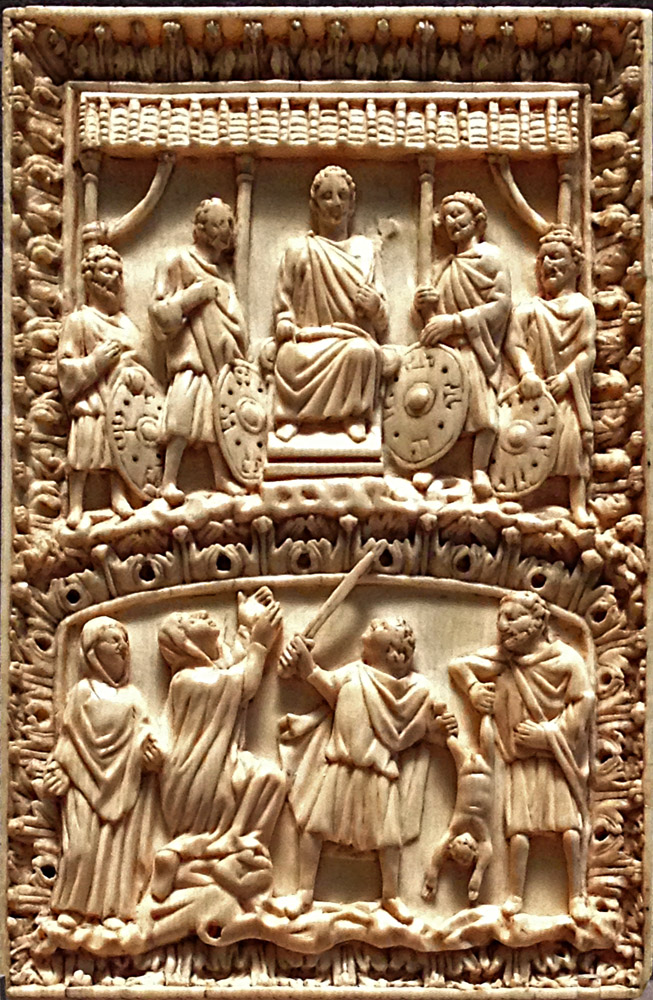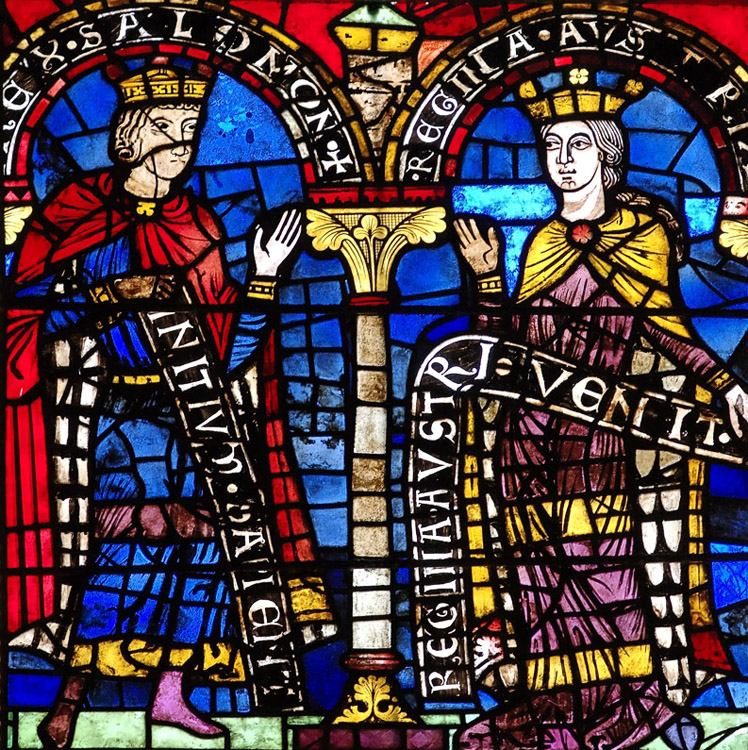Solomon is most often seen in paintings of the "Judgment of Solomon," his decision between two women claiming the same child (Vulgate 3 Kings 3:6-28). He finds the truth by commanding that the living child be split in two. The real mother, lifting her arms in supplication to the king, reveals the truth. Images of this scene are influenced by Christian commentaries comparing Solomon and the real mother to Christ and his Church (Glossa Ordinaria, II, 695-98).
Another Christ-Church connection arises in commentaries on the occasion when the Queen of Sheba visited Solomon's court upon hearing of his fame. She posed questions to him and came to see that "the report is true, which I heard in my own country, concerning thy words, and concerning thy wisdom" (Vulgate 3 Kings 10:6-7). The commentators took this visit to prefigure the "Church of the Gentiles" coming to Christ upon hearing of his miracles and then learning further of his divinity through the witness of the scriptures (Glossa Ordinaria, II, 775-78).
Because she represents the Church, the art usually treats the Queen with the kind of dignity accorded to images of Christ with the Virgin Mary, as in the second picture at right. In the great mosaic of the Virgin and Prophets in the south aisle at St. Mark's, Venice, the Song of Solomon is explicitly related to the Virgin. On her left Solomon holds a scroll with a phrase from the Song that in this context refers to Mary: quae est ista quae progreditur quasi aurora (6:9a), "Who is she that cometh forth as the morning rising?"
The artists almost always portray the Queen of Sheba as a white woman, ignoring repeated remarks by the commentators that she was an African.
Prepared in 2019 by Richard Stracke, Emeritus Professor of English, Augusta University, revised 2020-02-11.

The Judgment of Solomon in an 11th-century book cover. The placement of Solomon in majesty above the scene reflects the commentators' claim that in this role he represents Christ hearing the pleas of the Church. (See the description page for further discussion.)

This 12th-century image of the meeting of Solomon and the Queen of Sheba implies that the wisdom the queen seeks begins with fear of the Lord. (See the description page.)

Costantino Carasi's King Solomon and the Queen of Sheba focuses on the letter of the text and ignores the interpretations of the commentators. (See the description page for further discussion.)
MORE IMAGES
- 8th-9th century: Fresco fragment with a damaged portrait of King Solomon.
- 1807-13: The metaphorical "bed of Solomon" (Song of Songs, 4:7) is pictured in a relief sculpture on the façade of Milan's cathedral.